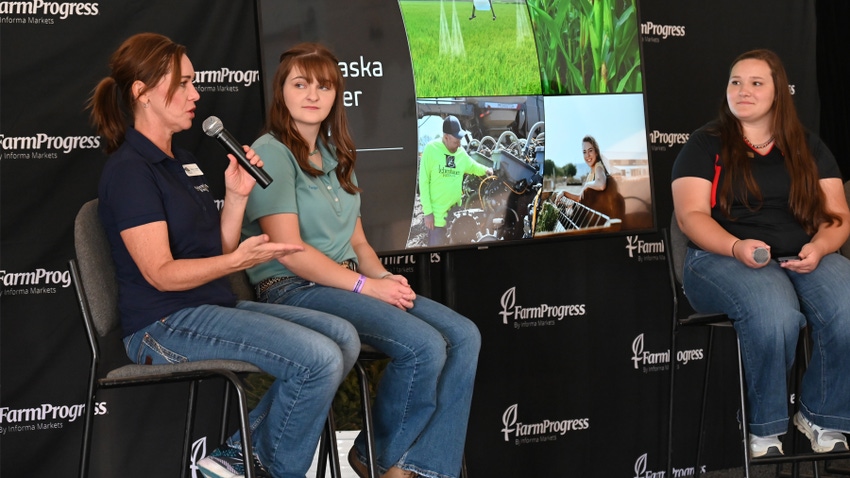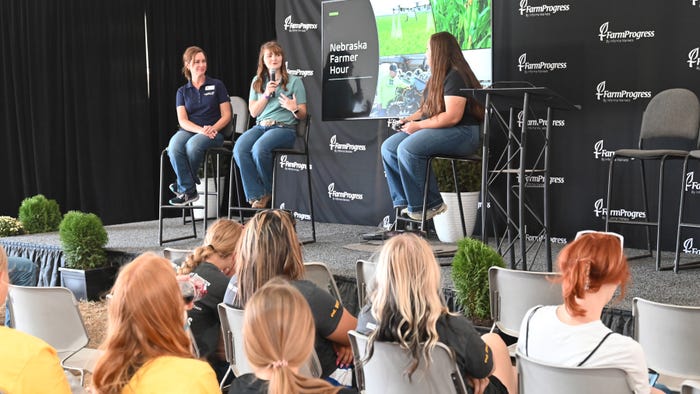
It happens all the time. Rural communities across Nebraska and rural America educate and raise talented, skilled young people through their local schools and youth programs — and then send them off to other places and other states for their careers and to raise their families.
That’s called a “brain drain” on rural communities. Nebraska Farmer staff writer Elizabeth Hodges visited with Paige Bunn, Nebraska state FFA vice president, from North Bend; and Stacey Agnew, executive director of the Nebraska FFA Foundation, at Husker Harvest Days during Nebraska Farmer Hour on the Hospitality Tent stage.
Hodges asked Agnew about why there is such growth in FFA in Nebraska and across the country, and why that is important.
Investing in the future
Agnew, who grew up in the Wauneta-Palisade FFA chapter and who served as an agriculture instructor at Hartington and Freeman before starting with the FFA Foundation 13 years ago, said that Nebraska has grown from 150 FFA chapters 13 years ago to 213 chapters today.
“Why is that happening?” she asked. “We know that local communities understand that it is important to invest in preparing their children for jobs in their own communities, whether that is in agriculture locally or across greater Nebraska. It addresses the ‘brain drain’ issue.”
FFA is in 80% of high schools west of Grand Island in Nebraska. The only pockets where there are few FFA chapters are around Omaha and Lincoln, as examples, with only one program in Omaha and another at Ralston. Ashland-Greenwood is a chapter near Lincoln and Omaha.
“So there continues to be opportunities for more growth,” Agnew said. “It is so important to have an ag teacher in the classroom every day teaching young people about agriculture and natural resources, and jobs that are available in their own area” in those fields.
Impacting FFA members
Bunn, who is a freshman at the University of Nebraska-Lincoln majoring in animal science with a business and communications option, told Hodges that she chose to run for the state FFA officer team because she witnessed the impact of previous state officer teams while attending the State FFA Convention as a high schooler.
“Going through the process of running for state office, I found a passion to help FFA members in achieving their goals and answering their questions about some of the challenges they might face,” Bunn said.
“One of my favorite activities since becoming a state officer was the COLT conference held annually at the Leadership Center in Aurora, because I got to meet with a bunch of different members from across the state.” The conference helped those members build their leadership traits.

WHY IT MATTERS: Bunn talked about the impact of FFA on her personally, why she chose to run for the state FFA officer team, and what she enjoys most about being a state officer.
More than 2,000 FFA members from Nebraska and surrounding states attend HHD every year. It is often said that HHD is the second-largest annual gathering of Nebraska FFA members — second only to the State FFA Convention in Lincoln in the spring.
In addition to interviews at the Hospitality Tent stage at HHD, Bunn and other members of the state FFA officer team met with FFA members on-site at the show, as well as FFA sponsors who support the programming across the state.
Learn more at neffafoundation.org.
About the Author(s)
You May Also Like






